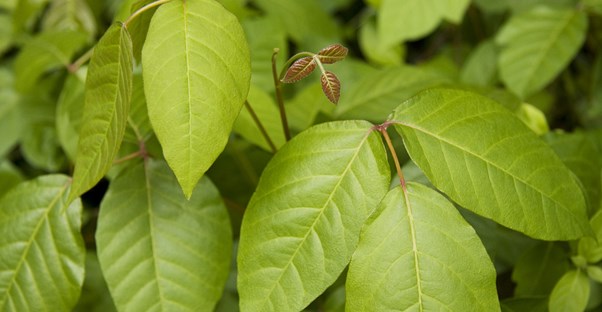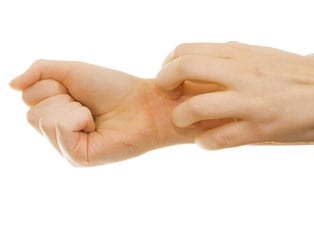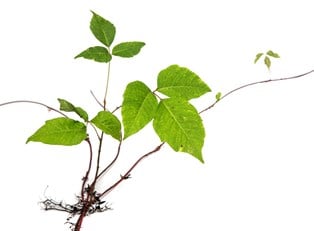While poison ivy doesn't affect 15% of the population, the aftermath of running into this plant isn't exactly pleasant for the other 85%. If you're in the latter group, symptoms include an itchy rash, blisters, and swelling. Thankfully, there are five easy ways to avoid getting a reaction.
- Know what you're looking for.
It's hard to avoid something if you don't know what you're trying to avoid. Poison ivy leaves are usually grouped into threes and are often shiny green. Depending on the season, the leaves could be red or orange.
- Cover up.
When you're walking in an area that might have poison ivy, wear long pants and a long-sleeve shirt. If you're planning on exploring or doing any work, wear gloves, and always remember to wear socks and closed-toed shoes instead of flip-flops or sandals.
- Watch out for pets.
If your pets are outdoor animals, there's a chance that you could get poison ivy from them. Since dogs and cats often don't have a reaction to the plant, you probably won't know that they were exposed to it until it's too late. If you have reason to believe that your pet has come into contact with poison ivy, wash him or her thoroughly with gloves on and don't touch the animal until he or she is dry.
- Wash up.
If you accidentally touch poison ivy, wash the affected area as soon as possible; the oil from the plant can take up to 30 minutes to bind with your skin.
- Avoid contaminated water.
Only go into a pond or stream if you know the area. Poison ivy oil can spread in the water, so if you go swimming in a body of water with poison ivy, you can get a reaction without touching the plant.




